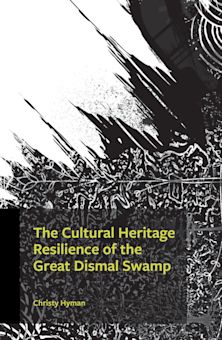- Home
- ACADEMIC
- Anthropology
- Cultural Anthropology
- African Foragers
This product is usually dispatched within 2-4 weeks
- Delivery and returns info
-
Flat rate of $10.00 for shipping anywhere in Australia
You must sign in to add this item to your wishlist. Please sign in or create an account
Description
Foraging bands were the quintessential form of human social organization for most of prehistory. Current arguments rage on the genesis of the contemporary descendants of these hunter-gatherers and their applicability to our understanding of lifeways before agriculture and domestication of animals. Sibel Barut Kusimba addresses this debate by synthesizing the archaeological evidence in Africa from the Middle Stone Age to the present, where the greatest time depth of foraging cultures can be traced. She develops a comprehensive picture of these foundational human societies, their social and technological adaptations to environmental conditions, and the impact of interaction from later economic systems on their lifeways. The book should be of importance to both cultural and archaeological anthropologists and their students.
Table of Contents
Chapter 2 Foreword by Joseph O. Vogel
Chapter 3 Preface
Chapter 4 Chapter 1: Monuments of the Past
Chapter 5 Chapter 2: Human Landscapes
Chapter 6 Chapter 3: Humans, Tool Makers
Chapter 7 Chapter 4: Hunters, Gatherers, and a Social Universe
Chapter 8 Chapter 5: The Emergence of the Hunter-Gatherer
Chapter 9 Chapter 6: Microlithic Episodes
Chapter 10 Chapter 7: Preludes to the Neolithic
Chapter 11 Chapter 8: Twilight of the Hunterers-Gatherers
Chapter 12 Appendix: Nelson Bay Cave, Lukenya Hill, and Kisio Rockshelter
Chapter 13 Bibliography
Chapter 14 Author Index
Chapter 15 Subject Index
Chapter 16 About the Author
Product details
| Published | 29 Jan 2003 |
|---|---|
| Format | Hardback |
| Edition | 1st |
| Extent | 312 |
| ISBN | 9780759101531 |
| Imprint | AltaMira Press |
| Dimensions | 238 x 155 mm |
| Series | African Archaeology Series |
| Publisher | Bloomsbury Publishing |
About the contributors
Reviews
-
If modern humans originated in Africa, it is obvious that one should look there to understand the fundamental processes involved. Kusimba's book helps one to focus on the lifestyles and history of African foragers in such a way that no one can escape the implications of this basic truth.
H-Africa
-
African Foragers is a tour de force. Dr. Kusimba explores African Foragers lifestyles with dedication, competence and clarity. In her crystal-clear style, she paints in eight incisive chapters a nuanced picture of Hunter-Gatherers research and spells out key episodes of Foragers odyssey, mostly in Africa, but sometimes beyond.
Augustin F. C. Holl, University of Michigan
-
Sibel Barut Kusimba's African Foragers will serve as an excellent introductory text for students, not just for those working in African archaeology but also beyond. This is a comprehensive, up-to-date synthesis of outstanding research on the archaeology of African hunter-gatherers.
Peter Mitchell, St. Hugh's College, Oxford University
-
The work is very well written, with a wealth of theoretical argument that will be extremely useful for graduate seminars in African Prehistory.
Andrew B. Smith, H-Africa
-
Kusimba presents a lucid, up-to-date review of the theoretical underpinnings of the archaeological interpretation of hunter-gatherers... the author interprets the later stone-age archaeology of the region in light of these ideas and underscores the dynamic and resilient value of the hunter-gatherer adaptation. The result is a volume that will be essential in college and university libraries...Essential.
R.B. Clay, (formerly of) University of Kentucky, Choice Reviews
-
Sibel Kusimba is one of a new generation of archaeologist who are invigorating the study of African prehistory. African Foragers: Environment, Technology, Interactions is an outstanding synthesis of current research on the prehistory of African foragers from earliest times through the Neolithic and into the colonial era. Unlike older works focused on artifact typologies and culture histories, Kusimba illustrates the ways in which environment, technology, and interaction combine in process of cultural adaptation. This process has created foraging societies that, on the surface, appear remarkably stable over long periods of time but which, when examined closely, are as dynamic as any other cultures on earth. Kusimba's writing is clear, engaging, and unburdened with jargon. Her examples are well-chosen and serve to illustrate both the stability and dynamism in African foraging societies. African Foragers is a rare example of a book that both students and scholars will find useful, one that can be used both as a course text and as a research source. It is sure to become a standard by which future works on the prehistory of African foragers are measured.
Peter Peregrine, Lawrence University


































